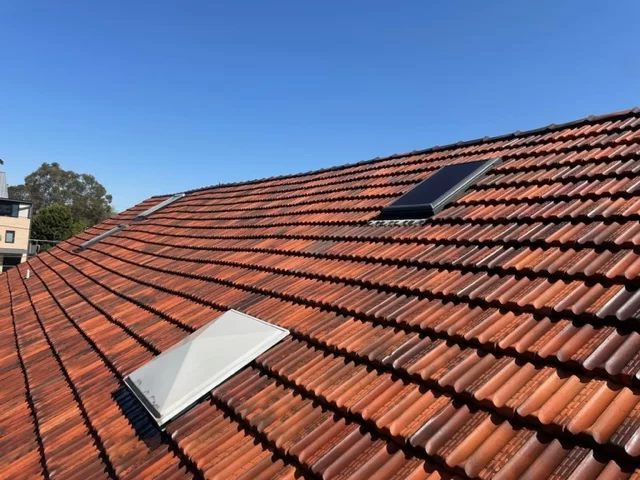
There are many components connected to thorough roof maintenance. While the bulk of your seasonal maintenance may involve checking for broken parts and cleaning out gutters, it’s essential to remove any signs of moss as well.
If you routinely use the roof repairs Melbourne homeowners rely on to keep seasonal roof maintenance up to date, then you don’t have to give roof moss a second thought. This is because your roofers will already be checking for it and removing it. If however, you’re doing roof maintenance yourself, you may not know what roof moss is.
What Exactly is Roof Moss?
Essentially, roof moss is a type of compressed plant growth that thrives on roofs where water and moisture aren’t able to evaporate and drain away. This type of moss is typically green and can be found between the shingles, slates, or tiles on your roof. Homes that are primarily in shady areas are more at risk because they don’t get enough sun exposure to dry out excess rainwater.
More Essential than Homeowners Realise
If you’ve seen the occasional moss growing on your roof, you might not have thought of it as much of a problem. In some instances, moss on an older roof can actually add to the rustic aesthetic of your property. However, did you know that moss on your roof can be detrimental and needs to be cleared off as soon as possible? We’ve compiled a list of the top reasons why.
1. Prevents a Leaky Roof
The most important reason to clean moss off your roof is because if left to grow, will lift the shingles or tiles. As the moss grows, it will widen and lift more of the shingles or tiles. When this happens, rainwater seeps in and the roof will start leaking inward into the ceiling.
This can lead to further damage and also the development of mould and mildew. It’s essential to point out that having your roof professionally cleaned is considerably cheaper than repairing loose tiles and shingles and dealing with the subsequent water damage. Therefore it’s more sensible to add oof cleaning and de-mossing to your annual oof maintenance tasks.
2. Keeps Moss out of Your Gutter System
Typically, moss rests on the roof, or latches onto the underside of shingles or tiles. Some loose pieces of moss can easily get washed into your gutters and downpipes. This can lead to or contribute to your gutters getting blocked.
If left unattended, these blockages can seep into your exterior walls, foundations, rooftop, and facia boards. Clogged gutters can also get heavy and start tearing away from the roof or wall where they’re connected. Pooled water can also cause the gutters to corrode and rust.
3. Reduce the Obstruction of Rain Flow
Roofs are generally designed with a significant slope that allows water to run directly off. This is supposed to make it less likely for water to pool. When you leave moss to grow freely on your roof, it can obstruct the slope and where the roof lines up with the gutter.
The moss can then cause the water to get backed up before it reaches the downward part of your roof. Since the moss absorbs the water, it may not be that obvious when you’re looking at it from the ground. However, the moss is actually enabling water to seep in under the tiles, shingles, or slates.
4. Eliminate the Extra Weight
Moss is essentially just a plant which means it’s not all that heavy when it’s dry. However, when it’s drenched in an afternoon of rainfall, it can hold up to 20 times its dry weight in water. That means wet moss is considerably heavier. Now, imagine the weight of a very large patch of moss resting on your roof. If you have an older, weaker roof, this weight can cause significant damage.
5. Reduce the Damage Caused by Frozen Moss
It may sound almost impossible to imagine moss getting so cold that it freezes, especially in Australia! However, in some areas, the temperatures can get so cold that roofing materials can freeze. Experts suggest that in these cases the moss can expand by up to 10%. This adds to the weight of the already heavy moss and can easily turn smaller cracks into bigger, gaping holes.
6. Makes Your Roof Look Good as New
Clearing moss off of your roof will also make a neglected roof look as good as new. You or your roofer will then easily be able to see if there are any damages, water leaks or blockages that need to be addressed. When your roof is clear of moss and other debris, it’s also easier for moisture to evaporate and in un reduces the likelihood of water pooling.
Final Thoughts
Simply put, moss is bad for your roof. Overgrown lichen, moss, or other types of bacteria can often lead to a leaking roof. This in turn leads to a hos of different issues on the inside and outside of your home. It’s a good to add checking for his to your seasonal roof maintenance list. This will ensure that your roof stays well-maintained for as long as possible.












